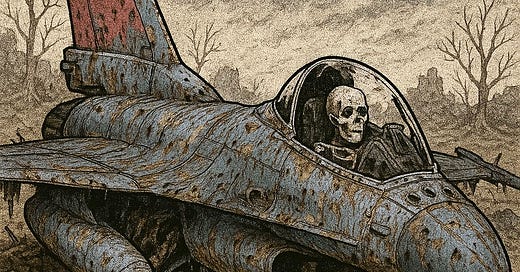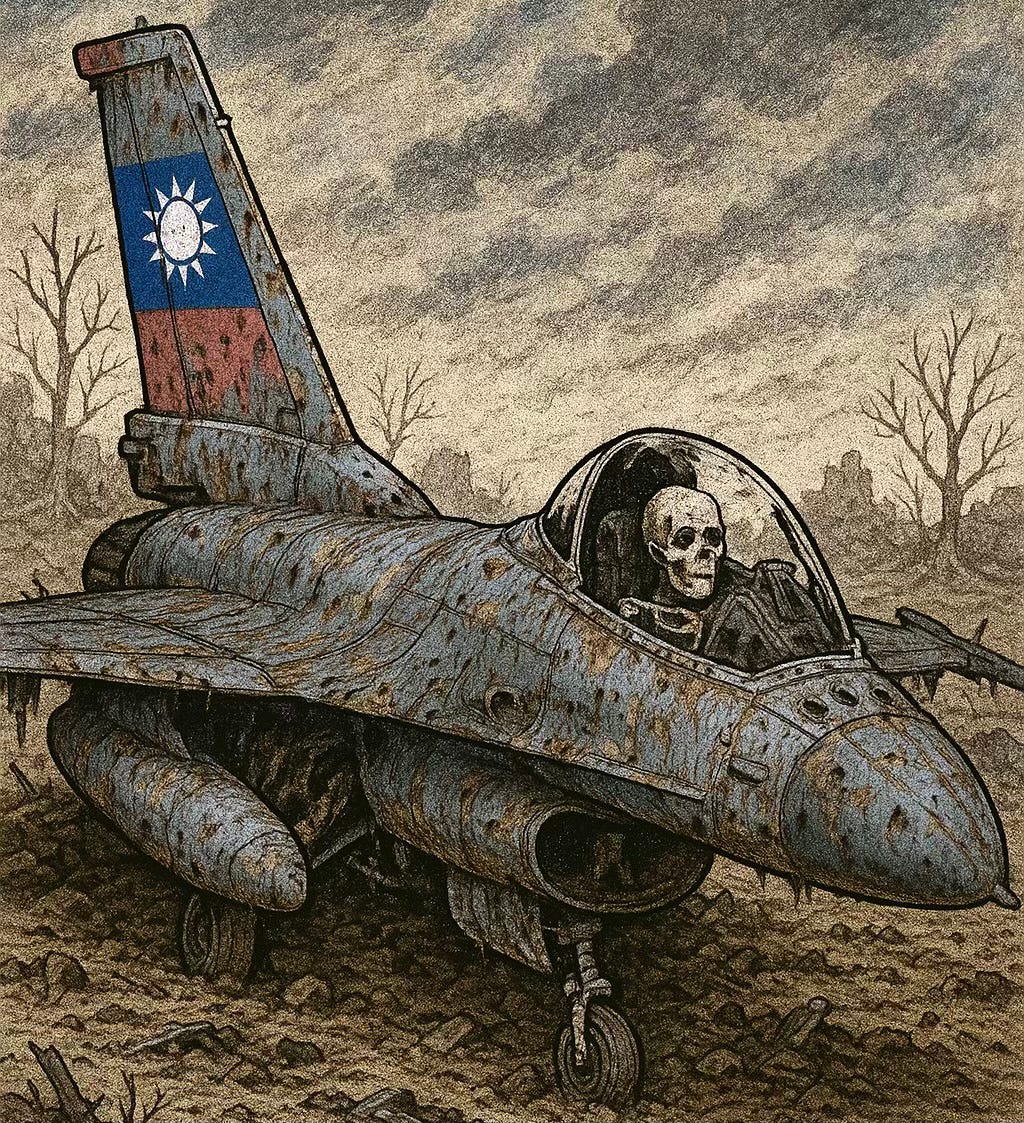China In Arms BOOKSTORE and GIFT SHOP!
Twitter and YouTube Page and LinkedIn
Subscribe: $30 Annual
22 June 2025 (Sunday)
Why Taiwan’s Air Defense Sucks
Lessons from Israel-Iran Feud
By Wendell Minnick (Whiskey Mike) 顏文德
TAIPEI - At any given time, approximately one-third of all fighter aircraft worldwide are undergoing maintenance or repair. This is entirely normal, except for advanced countries like the U.S.
This reality raises doubts about Israel’s ability to carry out sustained air operations against Iran from distant bases. While it may sound like a conspiracy theory, I suspect Israeli fighter jets are rearming and refueling at the U.S. airbase in Qatar.
Would it be surprising for a nation like Qatar—often seen as sympathetic to groups like Hamas and Hezbollah—to cooperate with Israel? Not necessarily. Qatar’s leadership likely opposes Iran’s nuclear ambitions just as strongly as Saudi Arabia does. In fact, Raytheon installed advanced radar systems years ago along Saudi Arabia’s eastern regions facing Iran. It’s plausible—though speculative—that these radar systems uplink to U.S. satellites and potentially even to Israeli defense networks. Saudi Arabia, a Sunni-majority country, is firmly opposed to Iran, a Shiite state, acquiring nuclear weapons.
The Al Udeid Air Base, the largest U.S. military installation in the Middle East, is located in Qatar. It houses the forward elements of U.S. Central Command (CENTCOM), along with its air and special operations forces in the region. The base also hosts rotating U.S. combat aircraft and serves as the home of the 379th Air Expeditionary Wing.
This collaboration, if true, would significantly reduce wear and tear on Israeli aircraft by shortening mission durations and reducing turnaround times.
[One of my more informed readers sent me this in response to my theory: Interesting theory re Qatar and Israel, but I suspect that the extent of any co-operation with the IDF [Israel Defense Force] would be limited to allowing IDF B767/KC-46/707 tankers to use Al Udeid, perhaps hiding amongst USAF tankers of the same type.
One interesting thing about the IDF's routes-to-targets in Iran (and for Operation Midnight Hammer as well) is the policy of Iraq, which has to be overflown in both case (and Jordan, but they are a confirmed ally of the US and Israel).]
Similarly, consider China’s military activity. When China flies up to 40 sorties in a single day over the Taiwan Strait and Bashi Channel, it suggests that its fleet of fighter aircraft is vast.
Now let’s examine Taiwan’s air power using the one-third readiness rule:
· 66 new F-16V fighters (on order)
· 114 F-16A/B Block 20s
· 129 Indigenous Defense Fighters (IDF)
· 52 Mirage 2000s
Total: 361 aircraft
Note: I’ve excluded Taiwan’s aging F-5 Tiger aircraft from this assessment, as they are primarily used for training and no longer offer meaningful combat capabilities.
If only two-thirds are combat-ready at any given time, that leaves approximately 240 aircraft available for immediate action.
China reportedly flies around 100 combat air patrols (CAPs) per week in the Taiwan Strait and Bashi Channel. This estimate includes unmanned aerial vehicles (UAVs), based on daily updates from Taiwan’s Ministry of National Defense (MND).
Even more concerning is that about one-third of these Chinese sorties cross the Taiwan Strait’s median line on a daily basis. That figure is based on my own calculations.
China has nine (9) fighter brigades stationed in the Eastern Theater Command, positioned across from Taiwan. It’s important to note that these are brigades, not wings, and they include a diverse mix of fighter and bomber aircraft.
In contrast, Taiwan fields only nine (9) wings in total—this count includes cargo aircraft (such as the C-130), intelligence platforms (like the P-3 and E-2), VIP transports, and its flight training base.
In conclusion, the addition of 66 new F-16Vs will not significantly shift the balance of power. Taiwan remains heavily outmatched.





